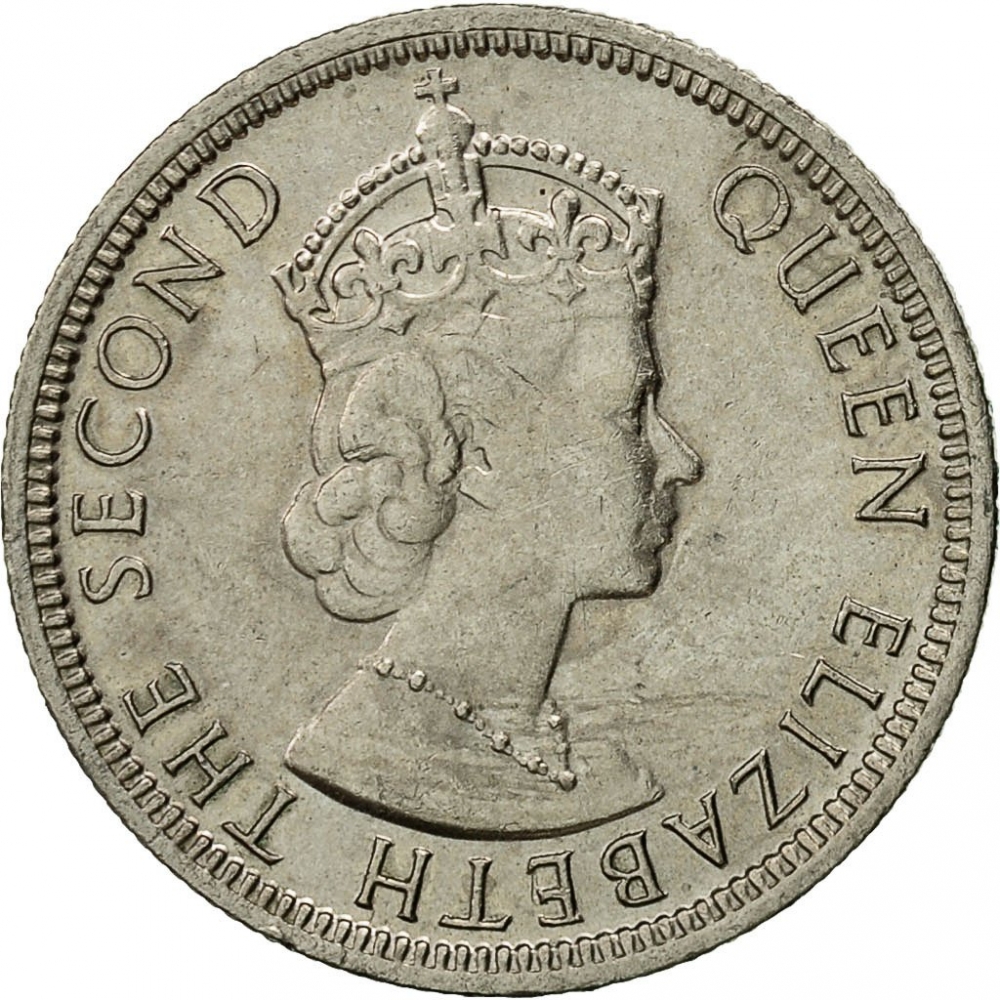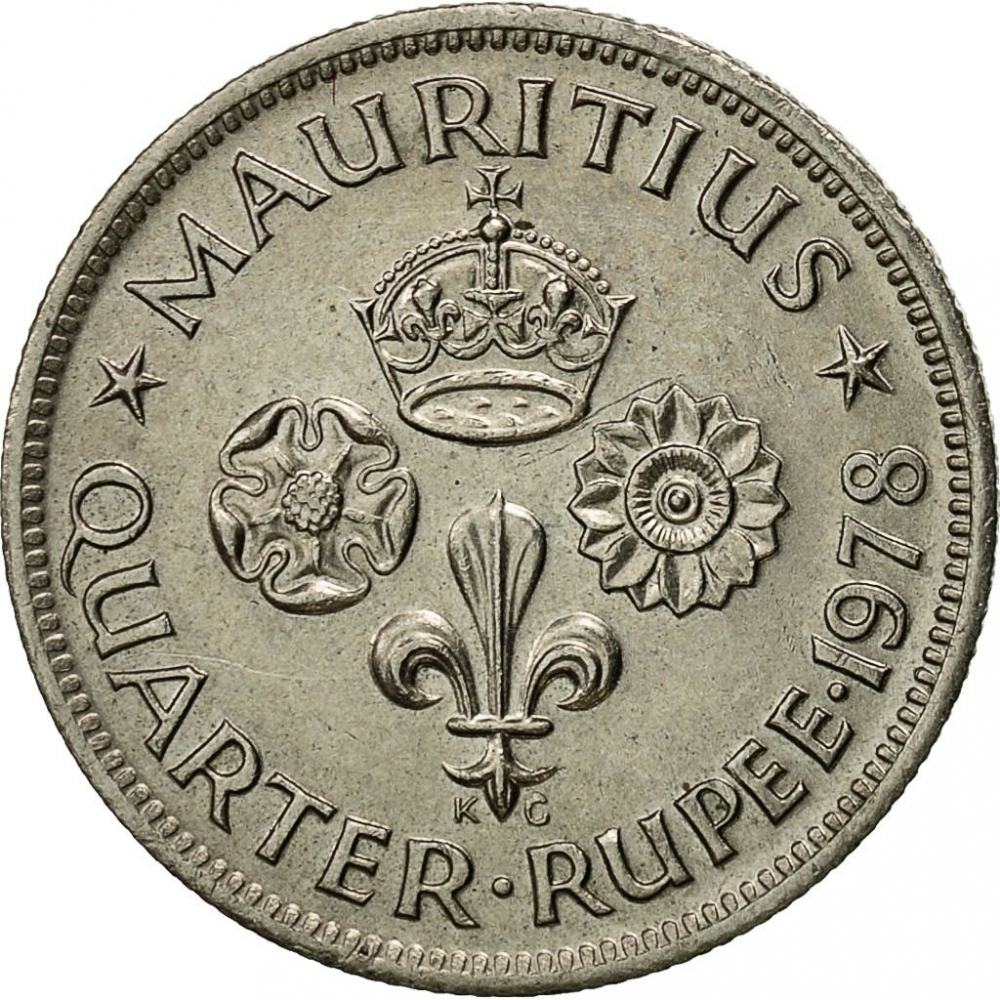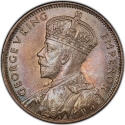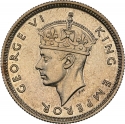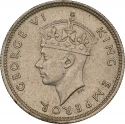You are about to finish your registration. Please check your mailbox (including spam folder). There should be a letter with a confirmation link. Check setting to make sure that your e-mail address is correct.
Send letter againDescription
British Mauritius was a British crown colony. Formerly part of the French colonial empire, the crown colony of Mauritius was established after a British invasion in 1810 and the subsequent Treaty of Paris that followed. It later gained independence as a Commonwealth realm on 12 March 1968.
Obverse

|
First crowned portrait of HM Queen Elizabeth II facing right, wearing the stylized heraldic Tudor Crown. QUEEN ELIZABETH THE SECOND |
|---|---|
Reverse

|
Crown above 3 emblems: Lotus flower, fleur-de-lis (stylized lily) and Tudor Rose. ★ MAURITIUS ★ |
| Edge |
1/4 Rupee
1st portrait, British colony
KM# 36 Schön# 24
Characteristics
| Material | Cupronickel |
| Weight | 2.95 g |
| Diameter | 19 mm |
| Thickness | 1.3 mm |
| Shape |
|
| Alignment | Medal |
